Indoor Seeding
Are you hoping to Exercise your Green Thumb?
Here is How
Growing plants from seed is a great way to get a head start on gardening. The goal with starting seeds indoors is to have your seedlings ready to go outside when the weather is favorable. Vegetables such as tomatoes and peppers require a longer growing season that’s why so many gardeners start those seeds indoors. Maybe you have a certain flower that cannot always be found at your local greenhouse so starting your own seedlings is the way to go. To begin with start slow and try a few of your favorites. It’s always fun to experiment and get your hands dirty. All you really need is some good soil, containers, seeds and maybe a grow light. Here are some tips on how to get started.
01.
Seeds
It is always a good idea to start with fresh, good quality seeds from a trusted source, so you have the best germination rate. Choose varieties that are easy to grow and are for our zone. Growing in the Edmonton area, we are considered zone 3.
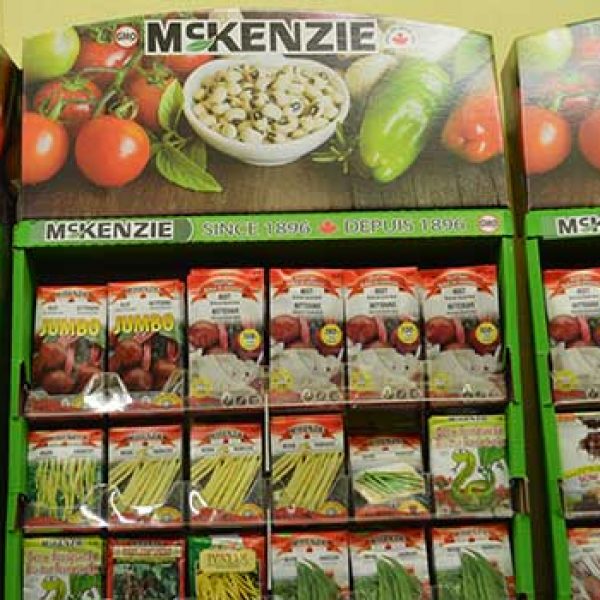
02.
Light
Seedlings need a lot of light. They will grow best under grow lights that have full spectrum bulbs which produce a balance of cool and warm light. Suspend the lights 4-6 inches above at first and then raise them as your plants grow. They will need about 12-16 hours of light per day. If you don’t have a grow light, choose a south facing window with some direct sunshine. You may have to rotate your pots or flats regularly, so the seedlings do not stretch towards the light.
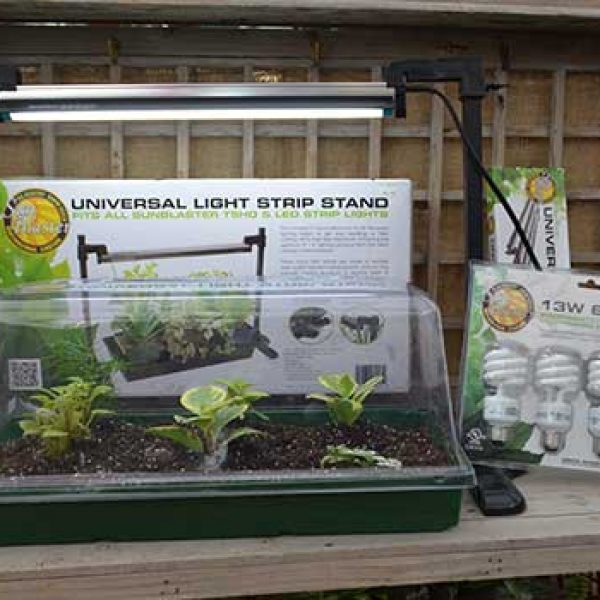
03.
Soil
We always start with fresh soil that is specific to seed starting. This seed starter soil provides the ideal conditions for sprouting seeds as it has smaller particles so when you sow small seeds they will have a better chance for germination. Generally, seeds need about 2- 3 inches of soil to germinate properly. The germinating soil must be kept moist and try to use tepid water as it will make germination more successful.
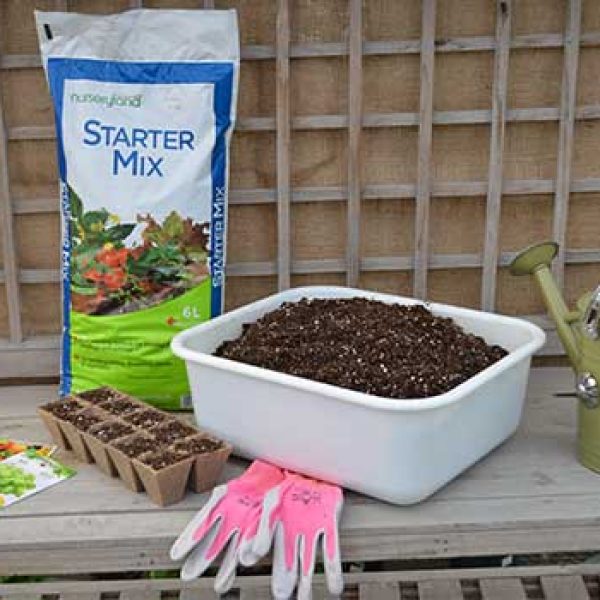
04.
Containers
There are a variety of containers that can be used for starting seeds. You can start seeds in most any type of container, if it’s at least 2-3 inches deep and has some drainage holes. You can use recycled containers or purchase the proper containers at the garden center. Make sure you disinfect used containers to avoid the spread of soil borne diseases. Soak pots in a solution containing one part household bleach and 9 parts water for a minimum of 10 minutes.
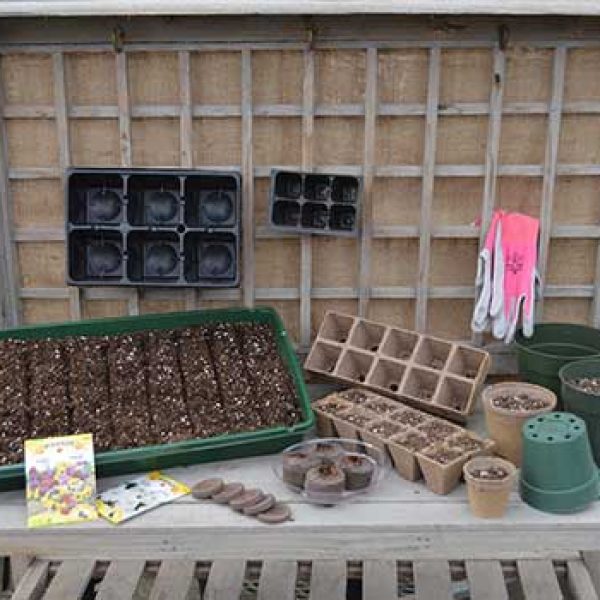
05.
Sowing
Before filling your containers with soil, use a bucket or tub to moisten the planting mix. The goal is to get it moist but not sopping wet; crumbly, not gloppy. You should always moisten your soil before you start seeding. Avoid deep holes or trenches as this makes it difficult for the seeds to push through during germination. Larger seeds such as tomatoes, peppers and pansies should be lightly covered with vermiculite or some extra soil mix. Check the seed packet for planting depth or other requirements. Very small seeds like petunias, lobelia or snapdragons do not need to be covered. Place 2-3 seeds per cavity or pot, try not to over-seed. After seeds are placed and covered, they will require regular misting to ensure germination. Again, strive to keep the soil moist but not saturated with water.
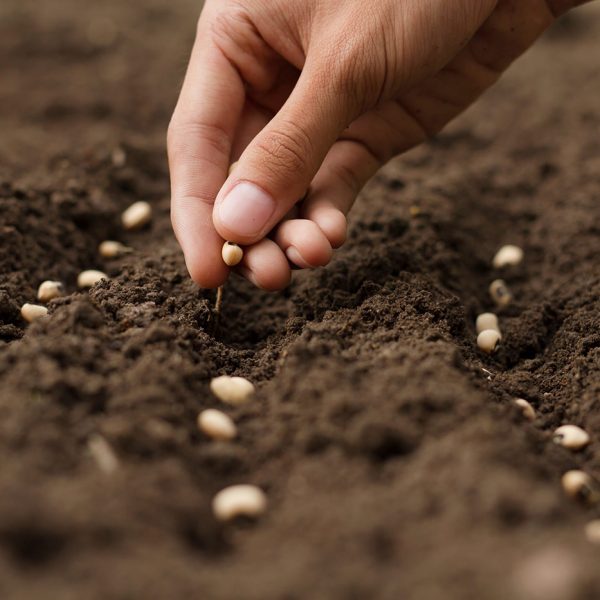
06.
Humidity and temperature
It’s a good idea to use a seedling dome for germination. These domes usually fit over a regular bedding plant tray and you can start numerous varieties in one tray. A dome can act as a small greenhouse to keep the humidity high for growing. Once your seedlings grow larger the dome can be removed and then water is needed only when seedlings are dry. You will get sturdier, stockier seedlings if you grow them on in a room with lower temperatures while still maintaining a good light source. At higher temperatures, seedlings may get leggy.
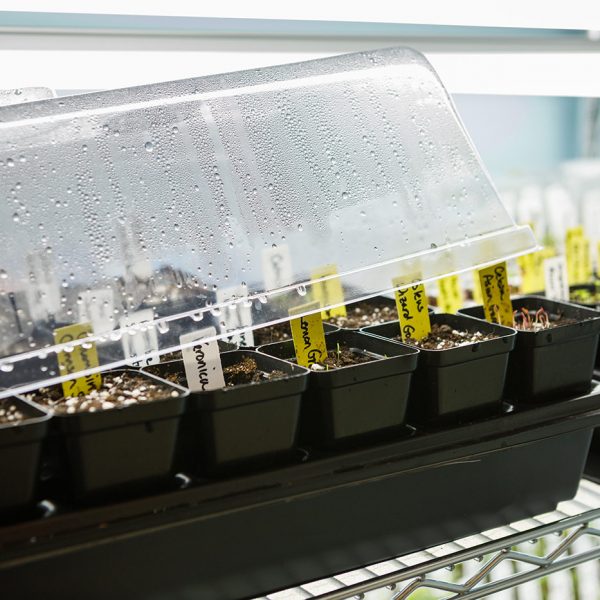
07.
Fertilizing
You will need to start thinning or transplanting your seedlings once they have two sets of leaves. Choose the strongest, healthiest looking seedlings and transplant one per pot. Spread the pots out so there is more air circulation available.

08.
Transplanting
You will need to start thinning or transplanting your seedlings once they have two sets of leaves. Choose the strongest, healthiest looking seedlings and transplant one per pot. Spread the pots out so there is more air circulation available.
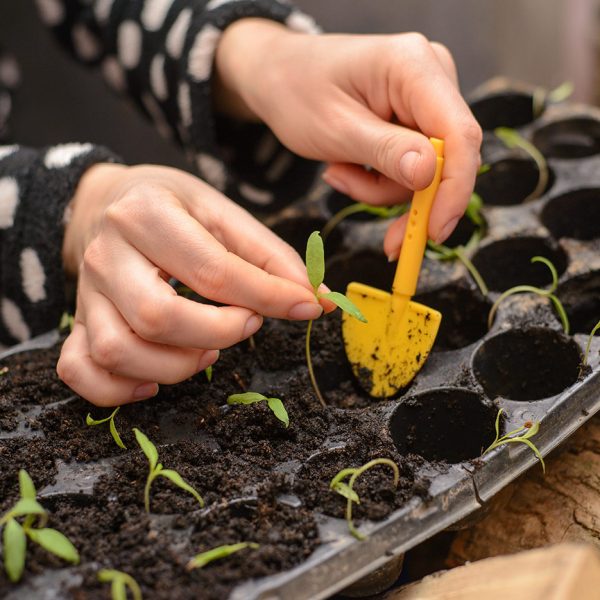
09.
Hardening off
It’s a good idea to gradually move your seedlings outdoors. A gradual transition is necessary. Start by placing them in a sheltered (partly shaded, out of the wind) spot on your patio or deck, first for an hour or two, and bringing them in at night. Over a course of a week or 10 days, expose them to more sunshine and wind. Once your plants are “hardened off” they can go in the garden.
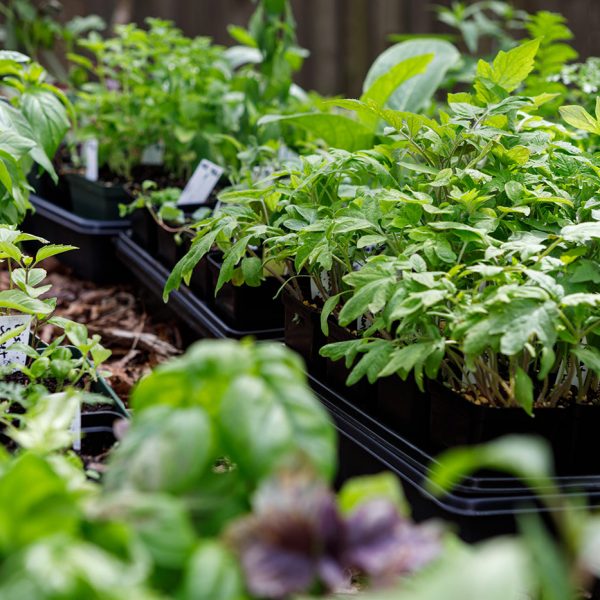
January
Geraniums, Begonias, Impatiens, Perennial Plants
February
Onions, Leeks, Parsley, Herbs, Hot and sweet Peppers, Asters, Pansies, Violas, Dusty Miller, Rudbeckia, Coleus
March
Petunias, Gazania, Dianthus, Lobelia, Salvia, Dahlias, Snapdragons, Portulaca
April
Nasturtiums, Lavatera, Zinnias, Alyssum, Morning Glories, Sunflowers, Tomatoes, Marigolds
